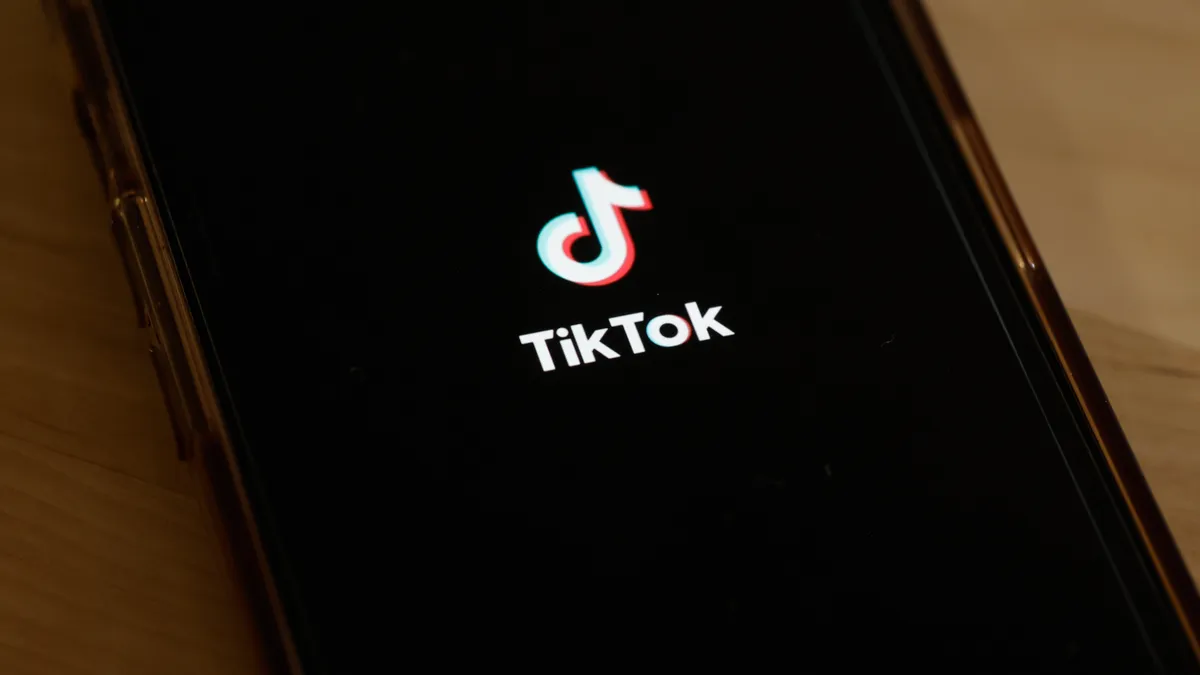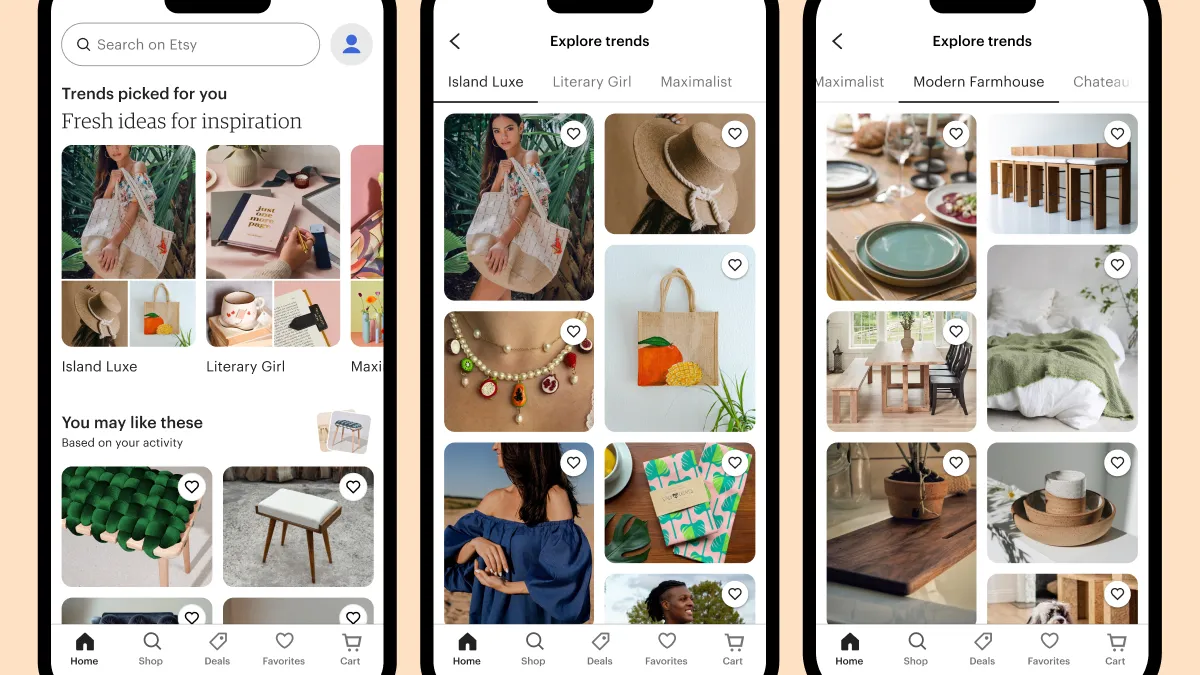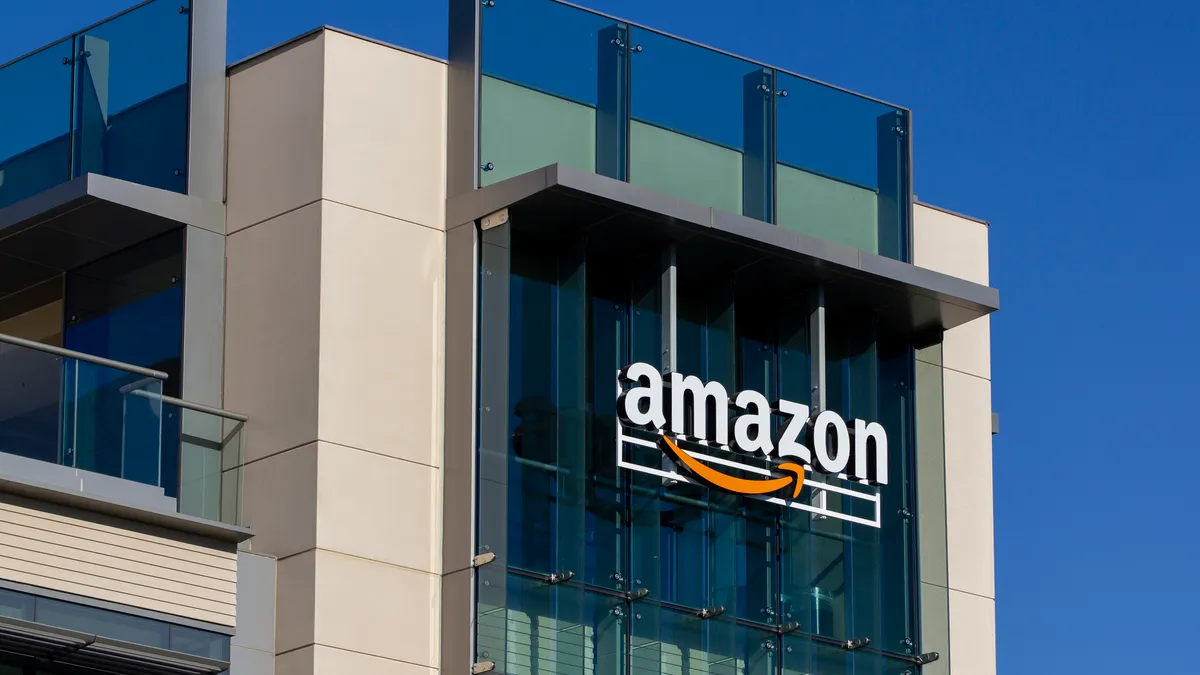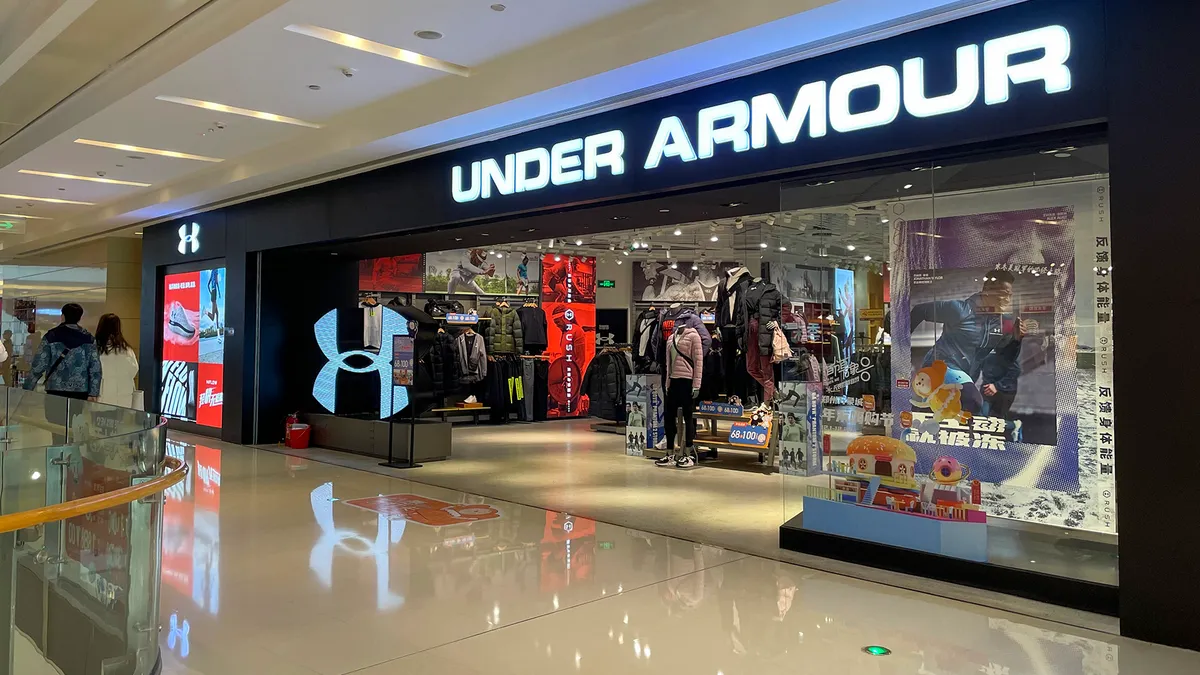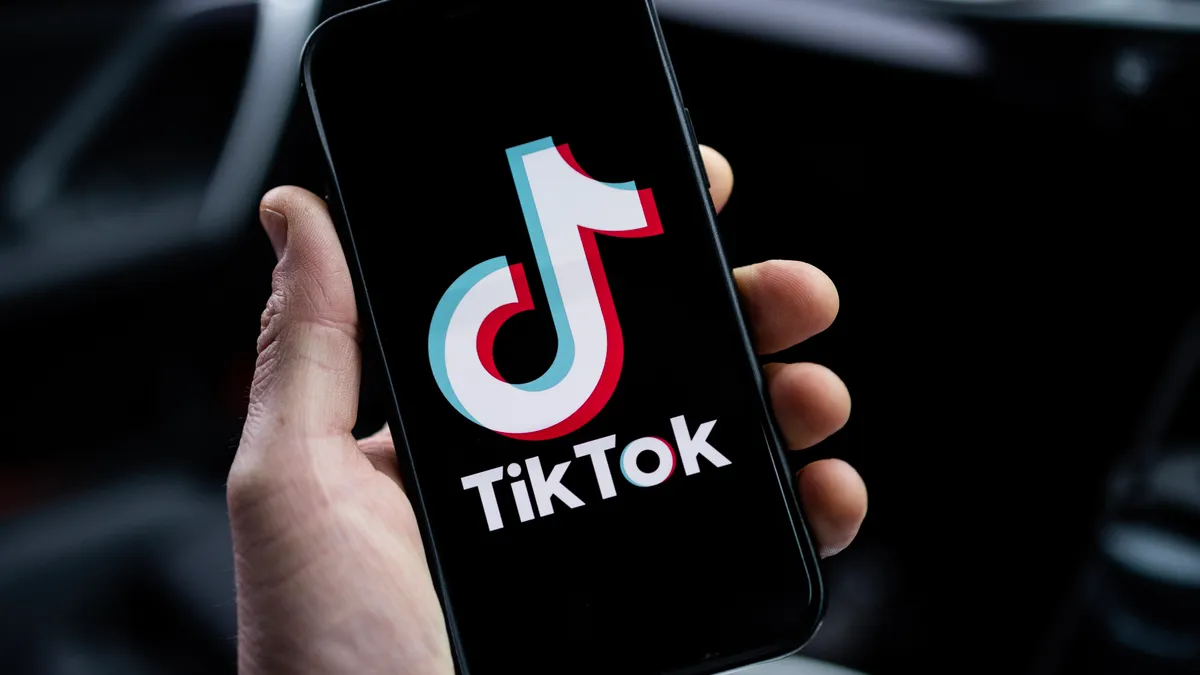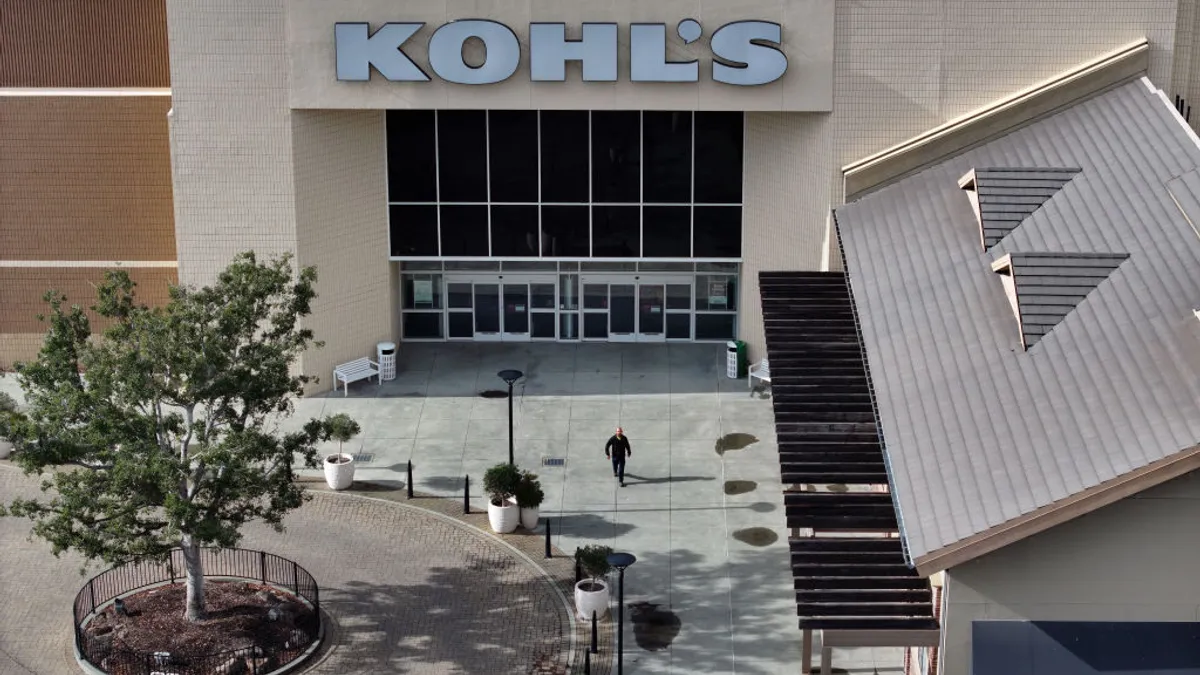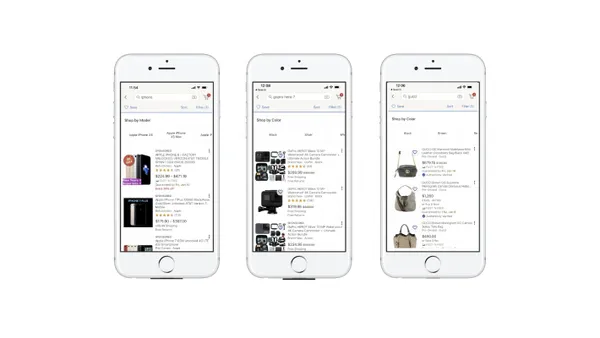When Snapchat released its iconic lenses almost six years ago, teens watched as they appeared on screen rosy-cheeked and vomiting rainbows, their eyes doubled in size. The interactive lenses changed as they moved their faces.
What was once a means of entertainment for teenagers might now pave the way for Snapchat's place in e-commerce.
Snapchat recently acquired fashion recommendation app Screenshop earlier in April, as reported by The Information, and sizing tech company Fit Analytics in March for an undisclosed amount. The company has slowly been inching into e-commerce over the last few years, but the back-to-back acquisitions might hint at its plans to establish growth and generate more revenue.
"Snapchat has a real opportunity ... to own more of that consumer journey," said Kristen Groh, consumer products industry lead, North America at Publicis Sapient. "They've made a move into advertising, which is a big play. But if you can take that further and actually own more of that journey all the way through to the point of purchase, you become a more valuable destination for your consumers and for your brands."
With e-commerce spending positioned to reach a trillion dollars by 2022, firms that traditionally don't sell products saw the opportunity to play a role in the consumer purchasing journey.
Throughout the pandemic social media platforms like Facebook, Instagram and TikTok have made updates that brought products directly in front of consumers, making the prospect of shopping unavoidable as they scroll.
"Everyone right now is trying to get a little piece of the pie," Groh said. Because of the pandemic, the buying journey — from browsing to purchase — happens predominantly online, causing consumers to miss out on the experiential part of shopping, she said.
Snapchat's place in e-commerce
The missing experiential component is where social platforms swooped in to fill the gap.
Instagram completely redesigned its homepage to accommodate a Shop tab last year, allowing users to explore and buy products directly on the app. Instagram and its parent company Facebook have introduced livestream shopping features to make it easier for brands and influencers to market products during streams. TikTok creators have coined the hashtag "#TikTokMadeMeBuyIt" to illustrate the app's ability to convince consumers to make impulse purchases.
The new developments and updates came fast. But it came at a prime time when consumers, especially Gen Z, spent more hours online to communicate, supplement in-person gatherings or simply to kill time.
Snapchat, on the other hand, had been partnering with brands and other AR tech companies to allow users to virtually try on products.
Last year, Snapchat showed users shoppable AR content for the first time during its try-on campaign with Gucci. The collaboration allowed Snapchat users to test the sneakers with the option to make immediate purchases using a "shop now" button.
American Eagle debuted a jeans guide in Snapchat in February, which lets users look at different bottoms through AR. Snapchat also teamed up with Perfect Corp. last year to bring AR beauty try-on to the app — allowing more than 200 beauty brands to build virtual storefronts on the platform.
"Shopping or commerce doesn't need to be the boring experience we've known for the last 25 years on the web."

Yuval Ben-Itzhak
President and Chief of Strategy at Socialbakers
Snap co-founder and CEO Evan Spiegel sees a lot of potential with the intersection of AR and e-commerce, he said during the company's 2021 Investor Day. Spiegel said the company is running experiments with retailers in an attempt to lower the likelihood of returns through AR.
"I also think a lot of retailers are really excited about the potential for augmented reality to reduce returns in the future, which is obviously a huge benefit in terms of cost savings, but also in terms of the environment," Spiegel said.
The idea of merging augmented reality with e-commerce through virtual try-on experiences was part of the bullish forecast executives had about the app's future. Senior execs at Snapchat said they expect top-line revenue to grow as much as 50% over the next few years.
"I think Snapchat can definitely deliver an experience that is much more modern, appealing to certain demographics, obviously the younger generation," said Yuval Ben-Itzhak, president and chief of strategy at Socialbakers. "The capability to deliver a new experience will enable social networks and Snapchat, in particular, to add something on top of the average 2% conversion rate on e-commerce that we've seen across the board."
The company has been hinting at becoming an e-commerce platform as far back as 2016 when board member Joanna Coles told Re/Code that Snapchat's Discover section might "at some point" turn into an e-commerce platform.
Spiegel said during a February call with investors that 200 million Snapchat users engage with AR daily. With the reach that Snapchat has, Ben-Itzhak said the app is well positioned to join e-commerce through the use of its camera technology — a feature users specifically go to Snapchat for, and other platforms have not developed.
"Shopping or commerce doesn't need to be the boring experience we've known for the last 25 years on the web," he said. "It can be something very entertaining and engaging and that's what social is all about."
Planting the flag
But amid the social commerce frenzy, Snapchat was a few steps behind its competitors in keeping younger users' attention through e-commerce, said Hana Ben-Shabat, founder of Gen Z Planet, a research and advisory firm, and author of the upcoming book "Gen Z 360."
There’s a lot at stake to keep younger users engaged. Nationwide, Snapchat reaches 90% of 13 to 24-year-olds and 75% of 13 to 34-year-olds, according to Snapchat Chief Business Officer Jeremi Gorman during a July call with investors.
Piper Sandler also found that Snapchat remains to be teens' favorite social platform late last year. Second place goes to TikTok.
Social media feeds and online advertising is what drives 56% of Gen Z's impulse purchases, a recent report from Gen Z planet indicates. Apps like Instagram, Pinterest and TikTok are places where consumers go to discover new products and potentially inspire purchases.
Despite the notion that Gen Zers have less disposable income, they've grown to become an empowered group of consumers even at a young age, said Ben-Shabat. Because the younger generation grew up with the internet and mobile devices, they are far more independent and have greater influence over their household's spending compared to previous generation at their age, she said.
Unlike their older peers, the younger generation is also more open to adapting new ways to shop, experts say. Which makes Snapchat's integration of shopping and AR appear as if it's defending its "turf," Ben-Shabat said.
The younger generation is "very independent in making those purchasing decisions and that's why they're becoming a very important consumer," Ben-Shabat said. "Building a relationship with these consumers today is really about securing your consumer of the future and securing the future of your brand."
What lies ahead for Snap
Snapchat's e-commerce strategy is a little bit beyond its "exploration stage," said Marcel Hollerbach, chief marketing officer of Productsup. Though it has proven to be more resilient than what analysts expected, Snapchat is yet to be a major driver of revenue for brands and retailers like Google Shopping, Instagram and Facebook's Dynamic Ads, he said.
Then there's the question of how Snapchat can flip the way users perceive the app from social to shopping platform — a problem many social networks have because they're pushing products that users don't need or particularly look for, Hollerbach said.
"For every network it is a transition, not just to develop the product but to also educate the users of that network," said Hollerbach. "That's just a step that doesn't happen overnight. It's behavioral change that needs to happen."
Social platforms saw an opportunity to join e-commerce during a time when more consumers were willing to try new shopping experiences as the pandemic continues to push consumers to shop less in physical stores.
Pre-pandemic, 31% of Gen Zers had never purchased anything online, and now 64% said they want to continue buying nearly everything online, according to a Sitecore study in April. Gen Zers, Snapchat's core user base, will quickly move on to another brand if they have a poor digital shopping experience.
"COVID has shown that it is so, so important to basically be in the driver's seat here and to control your own fate," Hollerbach said.
But if there's anything the pandemic has cemented, it's that trends change — quite quickly and unexpectedly. As vaccines become widely available and in-store shopping regains foot traffic, Gen Zers, who experts said preferred to shop in physical stores pre-COVID, might make fewer purchases online.
While Snapchat may offer a unique shopping experience, "the other potential challenge is how do you model that back in from an attribution and revenue perspective to the brands or to influencers that might be a part of that ecosystem as well and really getting that total business model," Groh said.
Until the virus' threat dials down, Snapchat's AR capabilities give consumers a more immersive online shopping experience that physical stores cannot offer at the moment, which differentiates Snapchat from other platforms, Groh said.
"It's interesting that [Snapchat] really started just as a toy, almost a fun little thing for kids," she said. "They've really evolved to become much more of a player with brands and bringing them into the ecosystem in a way that felt very much a part of the experience that they had created."








